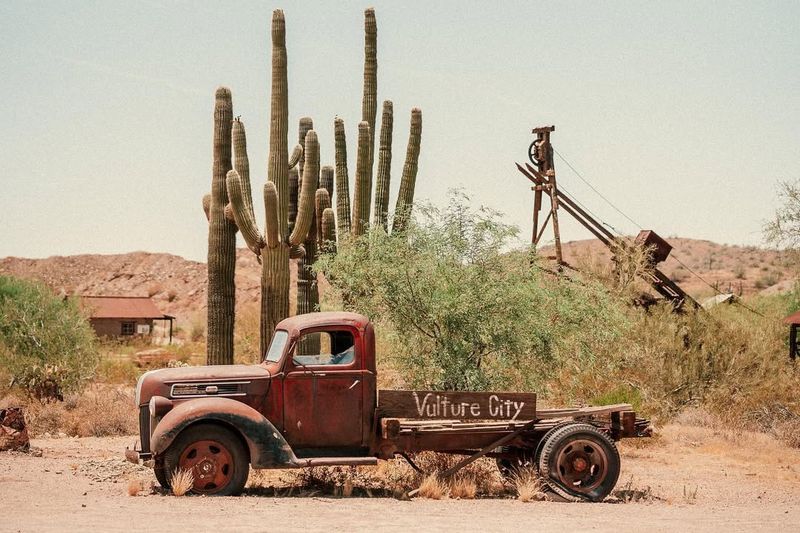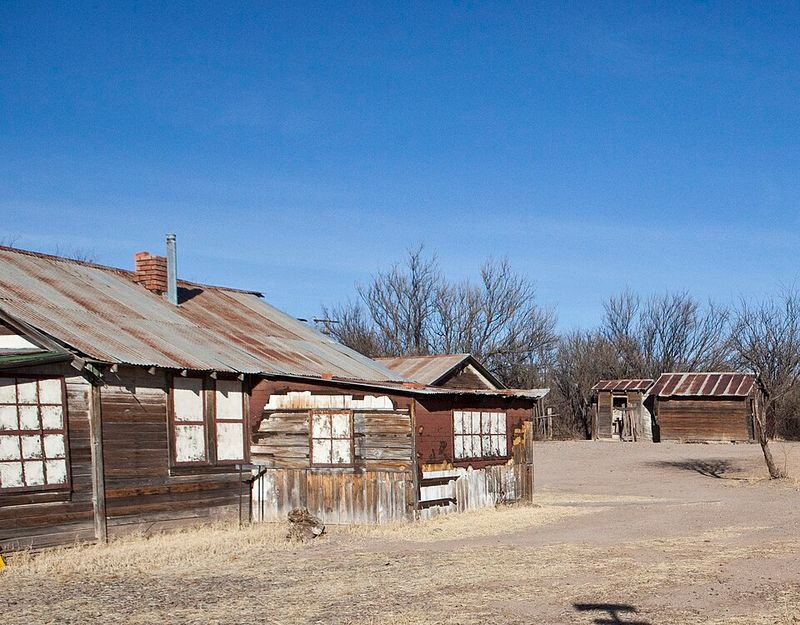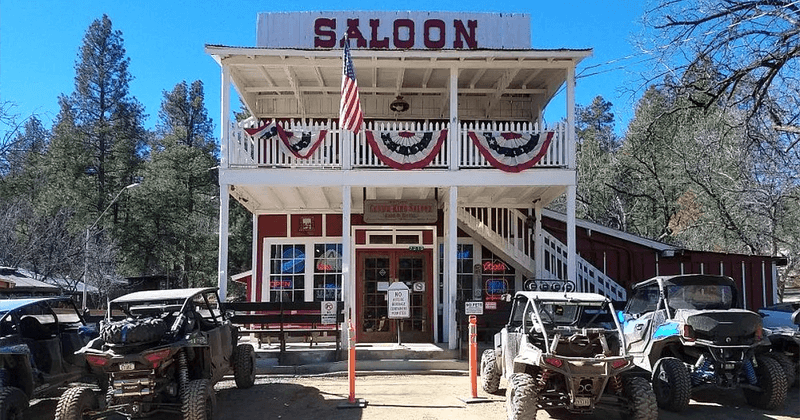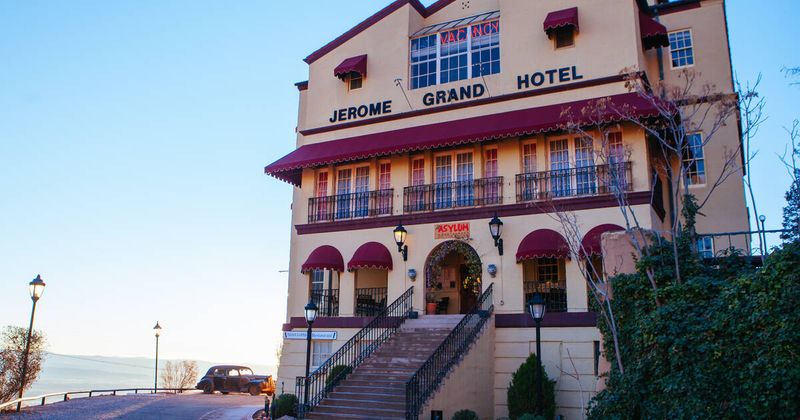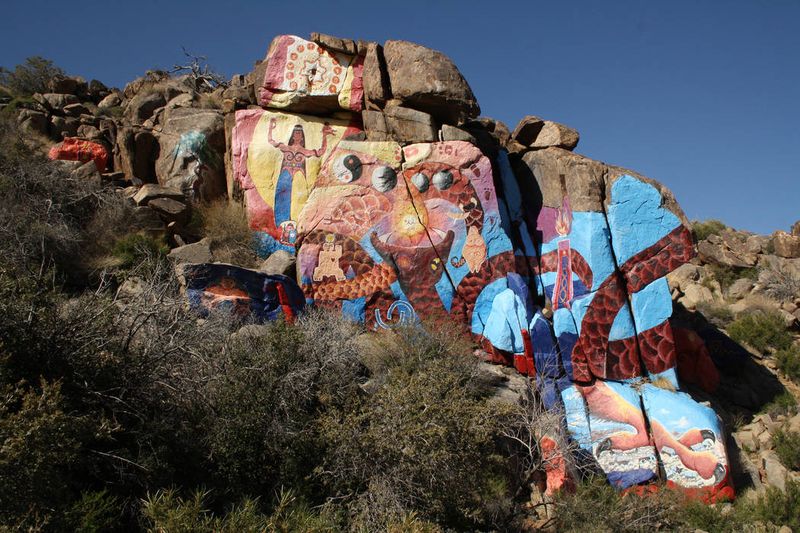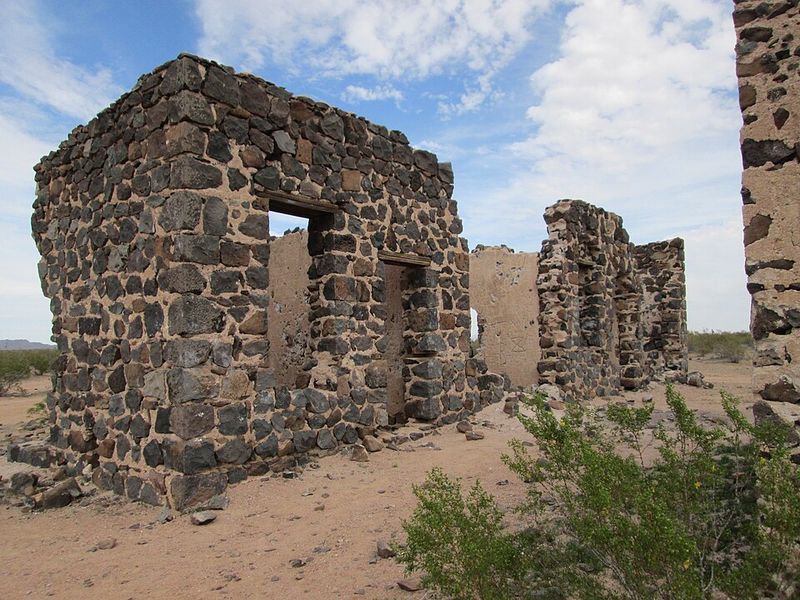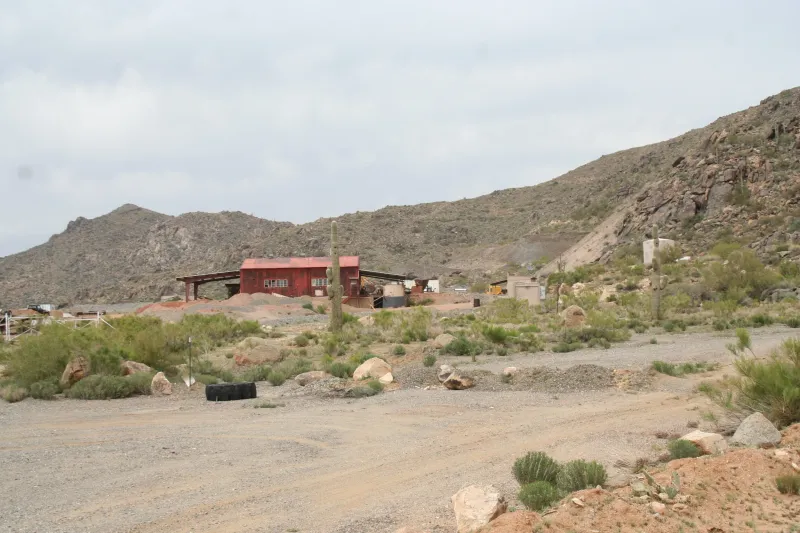Once bustling with miners, merchants, and dreamers chasing fortune in the desert, Arizona’s ghost towns now stand as haunting reminders of the past – slowly swallowed by time, sand, and sagebrush. These silent relics tell stories of boom and bust, where nature has taken back what humanity once claimed.
1. Ruby – The Desert’s Forgotten Treasure
Once a thriving mining town near the Mexican border, Ruby produced gold, silver, lead, and zinc. Its prosperity waned after the mines closed in the 1940s. As nature crept in, rusting machinery and collapsing wooden shacks blended with mesquite and wild grass.
Today, it stands as a museum frozen under the Arizona sun. Ruby’s solitude is a testament to the transience of fortune. Visitors are left to wander its eerie silence, imagining the lives once bustling within.
The town’s legacy is etched in the rust and dust of abandoned dreams, offering a poignant reminder of nature’s ultimate reclaiming power.
2. Vulture City – Ghost of Gold Rush Glory
Founded in 1863 after Henry Wickenburg’s gold discovery, Vulture City once boomed with 5,000 residents. The ruins now echo with whispers of the past, as the wind whistles through crumbling adobe walls.
Nearby, the Vulture Mine remains one of Arizona’s best-preserved ghost attractions. Here, the desert blooms around ancient structures, a vibrant contrast to the melancholy decay.
The site’s history is a vivid tapestry woven with tales of fortune, ambition, and eventual abandonment. Vulture City’s enduring allure lies in its stark portrayal of nature’s relentless reclamation of human endeavors.
3. Fairbank – Where the River Whispered Goodbye
Fairbank once thrived along the San Pedro River, serving as a key supply stop for nearby mines. Its destiny altered when the railroad rerouted and the mines closed, leading to a population decline.
Today, cottonwoods and mesquite dominate the townsite, wrapping around weathered schoolhouses and skeletal storefronts. The gentle rustle of leaves whispers secrets of bygone days.
Fairbank’s story is one of loss and renewal, where nature has woven itself into every crevice of human history. The town remains a serene testament to the impermanence of human endeavor amid natural resilience.
4. Crown King – The Town That Refused to Die
High in the Bradshaw Mountains, Crown King holds a unique ghostly allure. Once a gold mining hotspot, its steep trails and towering pines offer breathtaking vistas.
Though many structures lie in ruins, revived cabins stand proudly, telling tales of resilience. Nature has softened the scars of old mining tunnels, transforming them into scenic escapes.
Crown King’s charm lies in its refusal to fade completely, keeping the spirit of ingenuity alive. It’s a blend of past and present, a harmonious coexistence of history and nature’s beauty.
5. Jerome – The Ghost Town That Came Back to Life
Perched on Cleopatra Hill, Jerome was nearly deserted by the 1950s after the copper boom faded. Yet, while the earth reclaimed its mines, artists and free spirits revived its homes.
Today, it thrives as a quirky, living ghost town, surrounded by stunning Verde Valley views. The town’s colorful personality is a vibrant contrast to its somber past.
Jerome’s rebirth is a celebration of creativity and perseverance. Visitors are drawn to its eclectic charm, where art and history dance amid nature’s embrace.
6. Chloride – Where the Desert Paints Its Own Art
Arizona’s oldest continuously inhabited mining town, Chloride, sits among surreal desert rock formations. Many original buildings remain, now adorned with vibrant murals.
Nature’s hand-painted hues – dust, rust, and sun – have blended seamlessly with man-made artistry. Chloride’s story is vividly told through its colorful facades.
This town stands as a fusion of history and creativity, where the past is preserved in a canvas of nature and human expression. Its charm lies in the harmonious coexistence of decay and vibrant life.
7. Swansea – Sun-Bleached Bones in the Desert
Once a copper smelting hub, Swansea had its own theater and auto dealership. Abandoned by 1930, the desert slowly reclaimed its structures.
Today, the Bureau of Land Management protects its remains, where rusted metal roofs bow under relentless desert winds. Jackrabbits dart between skeletal beams, adding life to the scene.
Swansea’s legacy is one of industrial ambition overcome by nature’s quiet triumph. The remnants offer a haunting glimpse into a past stripped bare by time and elements.
8. Oatman – Where Burros Rule the Streets
Oatman, near Route 66, never completely died, living half in the past. Wild burros, descendants of miners’ pack animals, wander the streets freely.
These gentle creatures roam amid weathered saloons and boarded-up hotels, embodying the spirit of a bygone era. Nature and nostalgia coexist in this desert time capsule.
Oatman’s charm is unique, a blend of history and whimsy. It invites visitors to step back in time while enjoying the lively presence of its four-legged residents.
9. Sasco – A Name Fading into Dust
The Southern Arizona Smelting Company gave Sasco its name and purpose. Now, the smelter’s ruins stand half-buried in the desert sands.
Saguaros grow through concrete foundations, nature’s quiet triumph over industrial ambition. The town’s name is slowly fading into dust, a relic of past grandeur.
Sasco’s story is a poignant reminder of human endeavors overrun by nature’s endurance. Its remains are silent witnesses to a once-thriving industry now woven into the desert’s fabric.
10. Congress – The Desert’s Echo of Prosperity
Congress was once the site of a massive gold strike. As the mines shut down in the early 20th century, the town’s prosperity dwindled.
The remains – rusted cars, stone chimneys, and desert flora – slowly meld into the surrounding wilderness. Nature’s reclaiming hand is evident in every corner.
Congress echoes with memories of past wealth, now softened by time and nature’s embrace. It stands as a testament to the fleeting nature of prosperity amid the enduring desert landscape.


